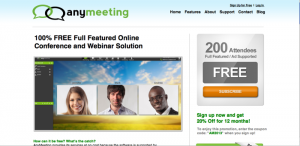 What is it about knowing your audience that makes a message work? The answer is in the question, of course — knowing your audience. But what does that mean, exactly?
What is it about knowing your audience that makes a message work? The answer is in the question, of course — knowing your audience. But what does that mean, exactly?

There are lots of blog posts out there outlining processes for getting to know your audience. Many of which involve market research, interviews with customers and doing what is likely one of the most essential and often under-practiced marketing disciplines — listening.
Other effective means of getting close to your audience involves data solutions, analytics, tracking behaviors, identifying patterns in various behaviors and then profiling your audience along these lines.
Getting a finger on your audience's pulse can also entail focusing on common interests among your social media followers — data that is readily available via Facebook profiles and Pinterest boards.
You've probably dabbled in these methods with some degree of success. Maybe you've even had remarkable success, but you still thirst for that secret ingredient that makes some marketing messages stand out and stick like a fresh coat of candy apple red paint.
If you take a look at some of the most effective ad campaigns and messages, you'll find that they all seem to have one thing in common: they don't just know their audience, rather they have a deep understanding of what motivates their audience. Which is to say that the most powerful messages tap into the audience's desired emotional state and transport them from where they stand to another place and time. A message that connects deeply has a kind of transformative power that only comes from knowing what makes the audience tick. And it's not just made of words. There's magic in it.
Thankfully, much smarter people than I have cultivated deep and profound insights into human behavior that allow marketers an all-access pass to the motivational underpinnings of people's actions. Central to all these insights is the idea that people are motivated by two things — threats and rewards. And within each of these motivators are a myriad of "end goals" or desired emotional states that can be leveraged to create desire and motivate your audience.
In this fast-moving digital age, it's easy to get distracted by technology and forget that human beings with beating hearts are the fuel that keeps our economic engine running. These strategies focus on activating the human reward response by focusing on a specific desired emotional state or end goal. A good message is a promise. And if yours promises to help people achieve one or more of the following end goals, you'll have messages that are both memorable and motivational.
Don't be afraid to execute on these strategies in a fun way. The more unexpected your message is, the more powerful it will be. Which of these seems most appropriate for your offering? Which of these motivates your audience?
Power and Control
An absence of power or a feeling of loss of power activates the threat response. By offering to bring stability, empowerment and order to people's lives, you can activate the reward response and appeal to your audience on a deep, emotional level. The “Truth” campaign does just that by empowering young people to rebel against the big tobacco companies that were trying to manipulate them.
Pleasure and Enjoyment
Promising luxurious, sensual experiences appeals to the reward system in ways that don't need much explanation. Promise consumers’ senses a good time, and you'll tap into a motivational nerve that is millions of years old. BMW focuses on this motivator with the promise of the “ultimate driving machine.” Klondike bars also do it in a very clever way by posing the question, "What would you do for a Klondike bar?"
Freedom and Independence
Promising people a sense of freedom encourages people to look to you as a companion that supports their desire to break free from social norms and the confines of their current reality. Freedom to act courageously and get outside the box is an alluring proposition for many. Levi's flips the freedom switch with its “Go Forth” campaign that celebrates freedom and the hard work that comes with it.
Certainty and Understanding
The discovery of truth and knowing the inner workings of things can be very potent motivators for some. Promise to be a source of clarity and confidence, and you'll tap the basic human need for security. Feeling safe is a comforting reward. Promise to be a source of knowing, and you'll connect. Lumosity brain training leverages this by helping people understand that they can improve their mental capabilities because of a thing called neuroplasticity.
Achievement and Accomplishment
For many people, the act of doing something is fueled by an even deeper need to achieve a goal or to create for ourselves a sense of accomplishment. Promise to be a means to achieve this state, and you'll find plenty of takers. Nike has consistently tapped the human need to achieve a personal best for decades. Then again, so has the My Fitness Pal application, where members have lost 100 million pounds since 2005.
Delivering on the promise in your message at every turn, of course, is the key to making your message work. Simply saying the words isn't enough. Which goes without saying and is certainly worth repeating. Sound bytes alone won't cut it. The promise must match the experience.
If all of this seems obvious, it's because you already knew it before you read it. The question is: "Have you ever put any of these concepts at the center of your messaging strategy?" If so, feel free to share your thoughts about these and any other motivational concepts you may have used to develop messages that appeal to the deepest, inner-most desires of your audience.
If not, I encourage you to use these strategies to craft messages that communicate the most important benefit of any offering: the emotional ones.









